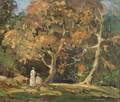62,100 CHF
Cartier, Paris, circa 1923. Very fine, painted on lacquer over wood and coral, eight day going keyless Art Deco Chinoiserie table clock designed as a cabinet in original red morocco fitted box. rectangular mirror with black indexes. Lacquer painted stepped index hands. Notes The imaginative style of decoration known as Chinoiserie reflects a fascination by Westerners with the exoticism of the East. For centuries, exchange between East and West was sporadic, and Cathay China remained more a myth than a reality. But during the seventeenth century, actual contact and trade with the East increased, and such luxury items as silk textiles, lacquer, and porcelain were eagerly sought in the West and later imitated by European artists. Europeans also began to decorate a wide variety of objects in the Chinoiserie style, with motifs culled from anywhere east of the Mediterranean and west exoticism of the East of Japan. As more Europeans visited Asia, greater authenticity became possible, but fantasy proved more appealing. Cartier is known to have decorated their clocks in Chinoisiere style from 1910 onward. In the 1920s Chinese influence on Cartier became very important. Clocks with dragons, Chinese scenes, and Chinese decoration became more and more popular. InIn the Cartier Exhibition held in the British Museum and the Metropolitan Museum of Art held in 1996, a section was devoted to Cartier's “Chinoiserie”. Despite the fact that Cartier's Chinoiserie style is well documented,

Auctioneer:
Antiquorum
Date:
2003-10-11


















